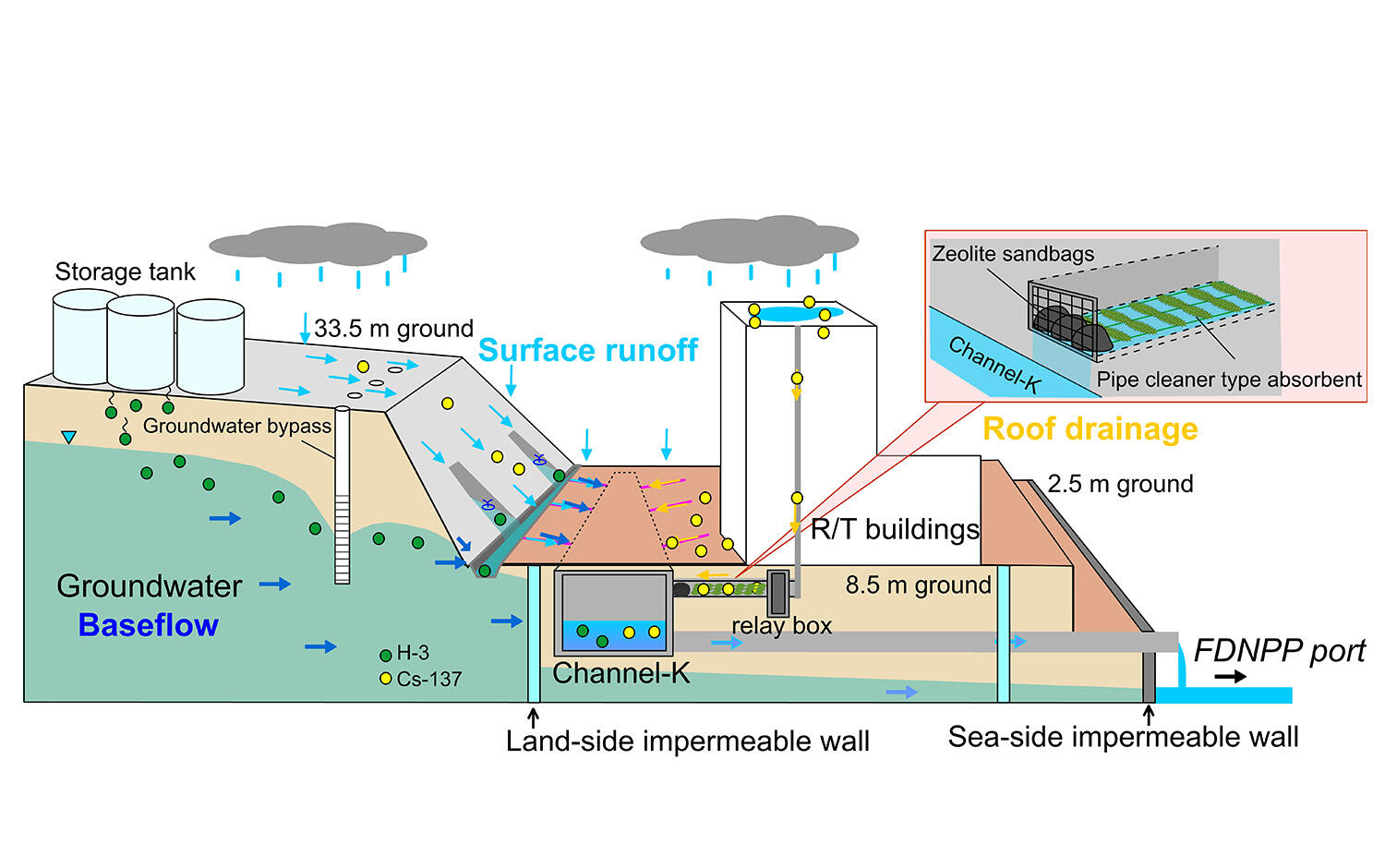Research News
Leaked Tritium Revealing the Mechanism of Radioactive Cesium Flow from Fukushima Daiichi to the Ocean

Researchers at University of Tsukuba have identified the source and the factors affecting the radioactive cesium (137Cs) flow to the port of the Fukushima Daiichi Nuclear Power Plant via its drainage channels. Using tritium in groundwater that leaked from contaminated water storage tanks as a hydrological tracer, they estimated that ~50% of 137Cs comes from "roof drainage" of the rainwater falling on the reactor buildings.
Tsukuba, Japan—Since the March 2011 nuclear accident, multiple measures have been taken to control contaminated water at the Fukushima Daiichi Nuclear Power Station operated by Tokyo Electric Power Company Holdings. As a result, the discharge of radioactive cesium (137Cs) to the ocean has been considerably reduced; however, low-level discharge continues to occur. Since 2016, fluctuations have been observed in the seawater concentrations inside the nuclear plant harbor: increase during summer, decrease during winter, and increase after rainfall. These fluctuations have been attributed to the 137Cs discharge via the K drainage channel because its outlet was redirected to the harbor in 2015; however, the discharge mechanism is still unknown.
Researchers used tritium (³H) leaked from storage tanks during the 2013-2014 period as a natural hydrological tracer to investigate the 137Cs flow mechanism from the nuclear plant site to the ocean via the K drainage channel. The results revealed that "roof drainage" (i.e., rainwater falling onto the rooftops of the reactor building and flowing out via gutters) is the main cause of the 137Cs flow. In addition, the 137Cs "baseflow" owing to groundwater varies with the air temperature, exhibiting increased concentrations during summer. In the 2016-2021 period, the estimated annual contributions to the 137Cs discharge owing to roof drainage, rainwater surface runoff, and baseflow were 53%, 31%, and 15%, respectively.
Herein, the discharge pathways and their contribution to the 137Cs flow from the nuclear plant site to the ocean were quantitatively investigated using ³H leaked from storage tanks as a hydrological tracer. By revealing the previously unknown links between 137Cs pathways and the factors affecting concentration fluctuations, this study provides essential insights for improving monitoring systems and strengthening the countermeasures against contamination sources. Furthermore, applying this methodology to other facilities and radionuclides can improve environmental management in future decontamination and decommissioning operations.
###
This study was funded by the Grant-in-Aid for Scientific Research on Innovative Areas (grant number 24110005), Grant-in-Aid for Scientific Research (A) 22H00556, the Japan Science and Technology Agency (JST) as part of the Belmont Forum, Commissioned research on the process of radioactive material discharge from the Fukushima Daiichi Nuclear Power Station site or surrounding areas, and the Environmental Radioactivity Research Network Center (ERAN) Y-24-01 and Y-25-02.
Original Paper
- Title of original paper:
- Leaked Tritium Reveals the Source of 137Cs from the Fukushima Daiichi Nuclear Power Plant to the Ocean
- Journal:
- Water Research
- DOI:
- 10.1016/j.watres.2025.124464
Correspondence
Professor ONDA Yuichi
Center for Research in Radiation, Isotopes, and Earth System Sciences (CRiES) / Institute of Life and Environmental Sciences, University of Tsukuba
Related Link
Center for Research in Radiation, Isotopes, and Earth System Sciences (CRiES)
Institute of Life and Environmental Sciences








